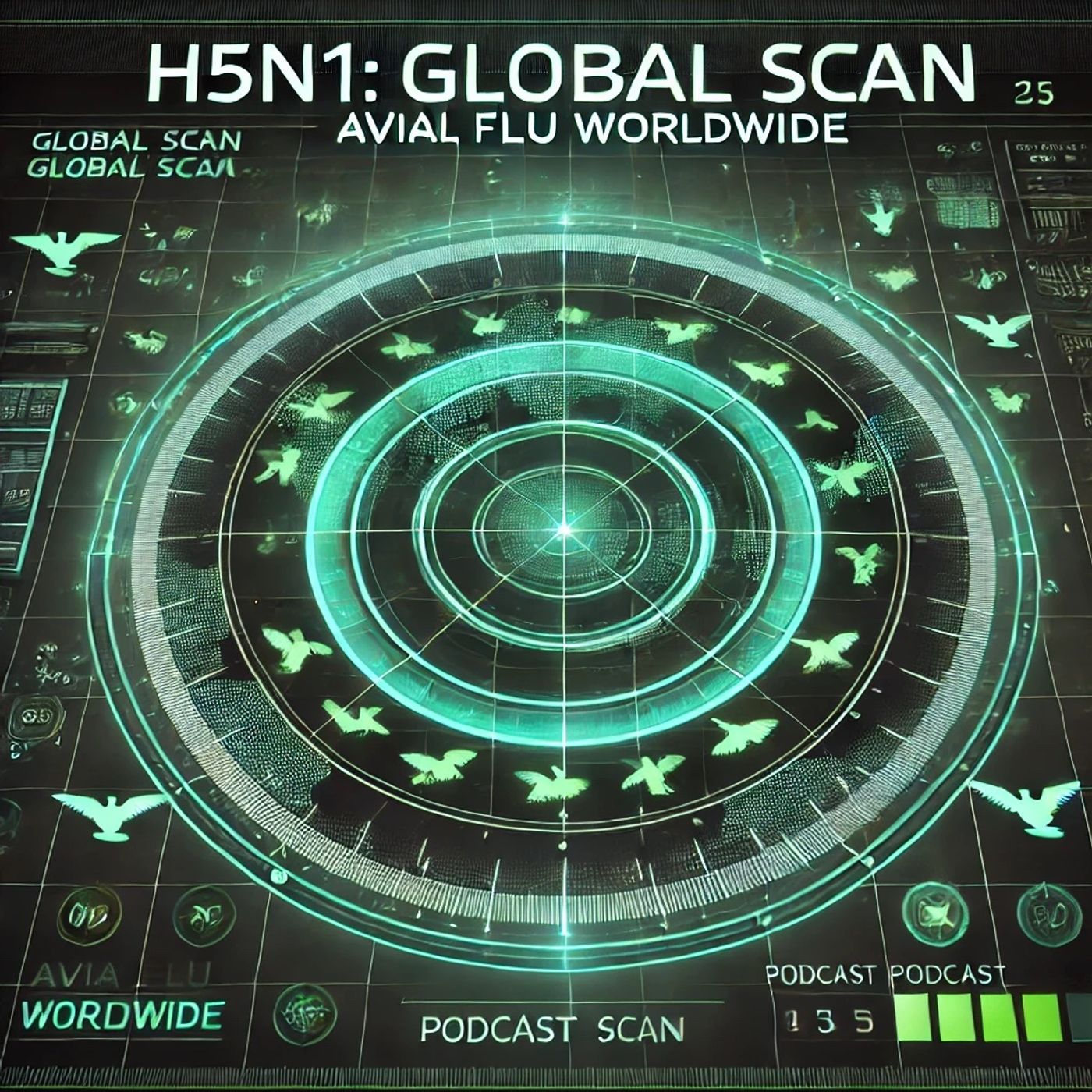Podcast Episode Details
Back to Podcast Episodes
H5N1 Avian Flu Surges Globally: 26 Human Infections, Heightened Surveillance, and Emerging Vaccine Developments in 2025
Welcome to “H5N1 Global Scan: Avian Flu Worldwide,” your international focus podcast bringing clarity to one of the most pressing zoonotic disease threats: the global spread of H5N1 avian influenza.
H5N1 has surged worldwide in recent years. According to the CDC, between January and early August 2025, 26 human infections were detected—23 outside the U.S.—with fatal cases in Cambodia, India, and Mexico. All human infections were traced to direct contact with poultry or wild birds, with no confirmed person-to-person transmission. The World Health Organization assesses the public risk as low, but vigilance remains essential due to the virus’s pandemic potential.
Let’s break down the impact by continent:
In Asia, Cambodia has seen an unusual monthly spike, reporting 11 laboratory-confirmed cases this year, predominantly in children. India's cases have also drawn global concern. Government and health agencies in these countries prioritize poultry surveillance, vaccination campaigns, and rapid containment in affected villages.
Over to the Americas, outbreaks remain persistent. The Pan American Health Organization notes over 100 animal outbreaks in the U.S. alone just in early 2025. Mexico saw its first human case and death in April. Egg shortages have emerged indirectly as millions of chickens are culled to control viral spread. The CDC and USDA are investing heavily in poultry surveillance, milk testing due to outbreaks in dairy cows, and support for farmers to contain losses.
Europe’s challenge continues, with confirmed cases in the UK and animal infections across the continent. The European Food Safety Authority has advocated cross-border coordination and harmonized surveillance systems, while trade restrictions on poultry remain a central issue.
Africa has reported outbreaks mostly among birds. Local containment is complicated by porous borders, limited resources, and challenges in reporting. Global health agencies work closely with national governments to strengthen response capabilities.
Australia, so far, has avoided major outbreaks despite tight biosecurity measures.
Scientific initiatives and research have intensified. Major projects span genomic surveillance—mapping variant spread—and vaccine development. As of 2025, several H5N1 vaccine candidates are under clinical testing in North America, Europe, and Asia, with the U.S. and EU leading regulatory reviews for emergency deployment, while China continues state-sponsored vaccine efforts for poultry and high-risk populations.
International coordination is vital. The World Health Organization and the Food and Agriculture Organization jointly urge transparent reporting, rapid response, and preparedness planning. They highlight the importance of data sharing between countries and harmonizing traveler and animal trade protocols. Trade impacts are sharp: poultry export bans from outbreak zones disrupt food supplies and economies worldwide.
Approaches differ nationally. The U.S. has the world’s most extensive surveillance and compensation programs, while Mexico and India focus on rapid culling and public outreach. The EU emphasizes biosecurity and coordinated animal movement controls. Cambodia relies on community engagement and backyard poultry monitoring.
As H5N1 continues to shape global health policy and research, international cooperation remains the cornerstone to containment and mitigation.
Thanks for tuning in to “H5N1 Global Scan: Avian Flu Worldwide.” Join us next week for more insights. This has been a Quiet Please production, and for more, check out Quiet Please Dot A I.
For more http://www.quietplease.ai
Get the best deals https://amzn.to/3ODvOta
Published on 1 day, 17 hours ago